ข่าวล่าสุด
หมวดหมู่สินค้า
ร้อน สินค้า
-
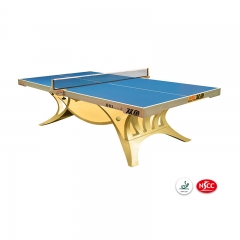
โต๊ะปิงปองพรีเมี่ยมสำหรับประชัน volant king
โต๊ะปิงปองระดับพรีเมียมรุ่นนี้เหมาะสำหรับการแข่งขันชิงแชมป์ อนุมัติโดย ittf และ nscc ไฟสีฟ้าช่วงล่างสีเงิน
อ่านเพิ่มเติม -
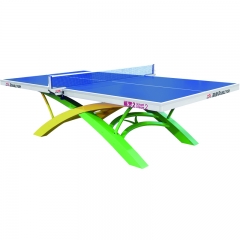
โต๊ะปิงปองอย่างเป็นทางการสำหรับการแข่งขัน Volant Dream 2
โต๊ะปิงปอง Volant Dream 2 อย่างเป็นทางการสำหรับการแข่งขันระดับนานาชาติที่ออกแบบโดยกีฬาปลาคู่
อ่านเพิ่มเติม -
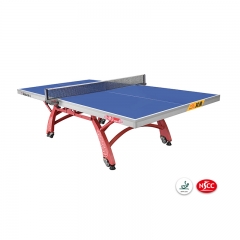
โต๊ะปิงปองอย่างเป็นทางการสำหรับการแข่งขัน xiangyun 328a
โต๊ะปิงปองแบบพกพา พับได้ พรีเมี่ยม ดีไซน์กะทัดรัด ระบบพับแบบใหม่ช่วยลดความเสี่ยงของการบาดเจ็บระหว่างการจัดเก็บและเคลื่อนย้ายโต๊ะ ittf อนุมัติโต๊ะปิงปอง
อ่านเพิ่มเติม -
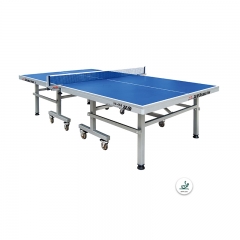
โต๊ะปิงปองอย่างเป็นทางการสำหรับเวิร์ลทัวร์ 99-45b
ittf อนุมัติโต๊ะปิงปองอย่างเป็นทางการสำหรับการแข่งขันระดับนานาชาติ ความหนาของโต๊ะ: 25mm คุณภาพการแข่งขัน – โต๊ะระดับมืออาชีพนี้ออกแบบมาสำหรับการแข่งขันในระดับสูงสุด สมบูรณ์แบบสำหรับครอบครัว – เสนอการเล่นระดับพรีเมียมสำหรับทุกเพศทุกวัย ไปแบบตัวต่อตัวหรือพับขึ้นเพื่อฝึกฝนเป็นรายบุคคล เหล็กหนา 2 นิ้วรองรับความท้าทายที่ยากที่สุด แกนกลางที่ยอดเยี่ยมสำหรับห้องเล่นเกม ถ้ำ หรือยิมของคุณ ประกอบง่าย – เริ่มเล่นในไม่กี่นาทีด้วยการประกอบอย่างง่าย ตาข่ายคุณภาพสูงมาพร้อมแคลมป์ล็อคที่ติดง่าย
อ่านเพิ่มเติม -

ปลาคู่คุณภาพดีที่สุด v40 volant ลูกปิงปอง 3 ดาว
ปลาคู่ v40 volant ลูกปิงปอง 3 ดาว เป็นไปตามมาตรฐานทางเทคนิค t3 ล่าสุดของ ittf ได้รับการอนุมัติจาก ittf และลูกอย่างเป็นทางการสำหรับทีมเทเบิลเทนนิสเวิลด์คัพ 2018 ที่ลอนดอน ตีกลับสูงขึ้น แกร่งขึ้น ,ปลอดภัยและทนทานกว่าเซลลูลอยด์แบบเดิมๆ ลูกบอลเย็บเอบีเอส
อ่านเพิ่มเติม -
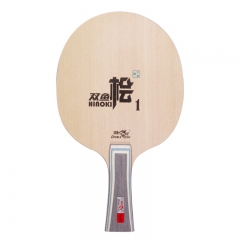
ปลาคู่ฮิโนกิ 1 ใบปิงปอง
|0|
อ่านเพิ่มเติม
ติดตามต้นกำเนิด | การพัฒนาโรงงานปิงปองกวางโจว (ตอนที่ 2)
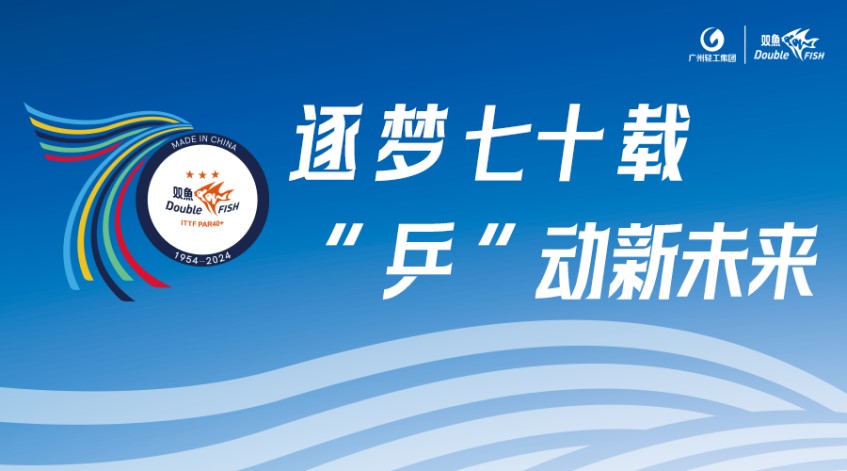
นับตั้งแต่ฤดูใบไม้ร่วงปี 1960 โรงงาน Chenggong Table Tennis Factory ใช้เวลามากกว่าสองปีในการพัฒนานวัตกรรมทางเทคโนโลยี ซึ่งโดยพื้นฐานแล้วได้เปลี่ยนเครื่องจักรในกระบวนการผลิตหลักของโรงงานภายในสิ้นปี 1963 ปรับปรุงผลผลิตและคุณภาพของผลิตภัณฑ์ และเริ่มส่งออกผลิตภัณฑ์ ในปี พ.ศ. 2506 มีผลผลิต 3.2 ล้านชิ้น มากกว่าสามเท่าของ 780,000 ชิ้นในปี พ.ศ. 2503 โดยมีการส่งออก 58,400 ชิ้น
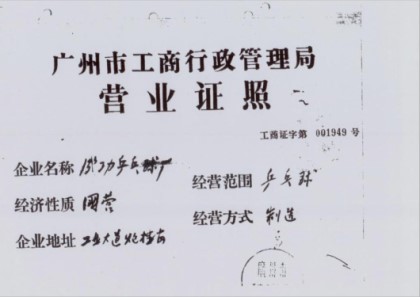
ใบอนุญาตประกอบธุรกิจของโรงงานเทเบิลเทนนิสเฉิงกง
1 เนื้อหาของบทความนี้อิงตามข้อมูลในอดีตของ Chenggong Table Tennis Factory และหน้า 303-304 ของเล่มที่ 5 (ตอนที่ 1) ของ "Guangzhou City Chronicles"
อย่างไรก็ตาม ในขณะที่การผลิตของโรงงานปิงปอง Chenggong กำลังเฟื่องฟู การขาดแคลนทรัพยากรน้ำในพื้นที่วัดโปโลก็กลายเป็นปัญหาใหม่ที่จำกัดการพัฒนาเพิ่มเติม ในท้ายที่สุด แผนกหัวหน้าได้ตัดสินใจย้ายโรงงานปิงปอง Chenggong ไปที่ Paolougang ถัดจาก Henan Industrial Avenue 2เพื่อแก้ไขปัญหาการขาดแคลนน้ำและขยายขนาดการผลิตต่อไป การย้ายที่ตั้งครั้งนี้ถือเป็นจุดเริ่มต้นของบทใหม่ในการพัฒนาโรงงาน Chenggong
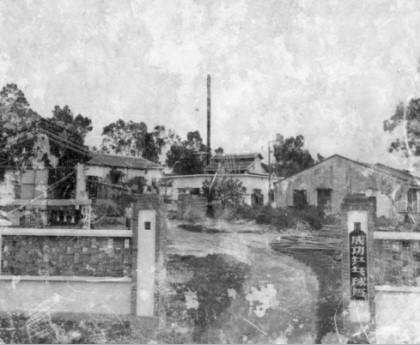
โรงงานเทเบิลเทนนิส Chenggong ย้ายไปที่ Yanzigang เขต Haizhu
2. Paolougang ถัดจาก Henan Industrial Avenue ปัจจุบันเป็นพื้นที่ Yanzigang ในเขต Haizhu เริ่มต้นในปี 1952 ชานเมือง "เหอหนาน" ในกวางโจวถูกสร้างขึ้นเพื่อเป็นฐานอุตสาหกรรมที่สำคัญในกวางโจว ถนนสายนี้ครั้งหนึ่งเคยเป็นหัวใจสำคัญของอุตสาหกรรมของกวางโจว และก่อให้เกิดสิ่งแรกๆ ในประเทศมากมาย ในยุครุ่งเรือง Industrial Avenue ยาว 5.5 กิโลเมตรผลิตผลิตภัณฑ์ที่ได้รับความนิยมทั่วประเทศ เช่น ตู้เย็น Wanbao แบตเตอรี่ Tiger Head จักรยาน Wuyang เป็นต้น พื้นที่ที่โรงงานปิงปอง Chenggong ย้ายไปเดิมเป็นโรงงานเซรามิก ซึ่งมีโรงงานพื้นฐานอยู่แล้วซึ่งอำนวยความสะดวกในการขยายการผลิต ด้วยการสนับสนุนอย่างแข็งแกร่งจากหน่วยงานที่เหนือกว่า โรงงาน Chenggong Table Tennis สามารถซื้อที่ดินและเริ่มการก่อสร้างได้ ซึ่งถือเป็นการวางรากฐานที่มั่นคงสำหรับการพัฒนาในอนาคต
ในปี 1965 โรงงานปิงปอง Chenggong ประสบความสำเร็จอีกครั้งโดยการพัฒนาเครื่องชั่งน้ำหนักลูกปิงปองเครื่องแรกในประเทศของฉัน จากนั้นจึงผลิตเครื่องวัดจุดศูนย์ถ่วงอัตโนมัติ เครื่องพิมพ์เครื่องหมายการค้าอัตโนมัติ เครื่องตัดขอบอัตโนมัติ และเครื่องวัดอัตโนมัติ ฯลฯ และเป็นผู้นำในการผลิตปิงปองแบบกึ่งอัตโนมัติและอัตโนมัติในอุตสาหกรรมเดียวกันทั่วประเทศ ในปี พ.ศ. 2509 มีการผลิตลูกปิงปองเกิน 10 ล้านลูก ในช่วง "การปฏิวัติวัฒนธรรม" ได้รวมตัวกับโรงงานบางแห่งและยังผลิตไทริสเตอร์ด้วย
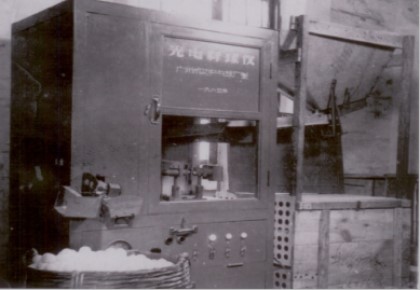
In 1965, Chenggong Table Tennis Factory pioneered my country's first photoelectric ball weighing instrument.
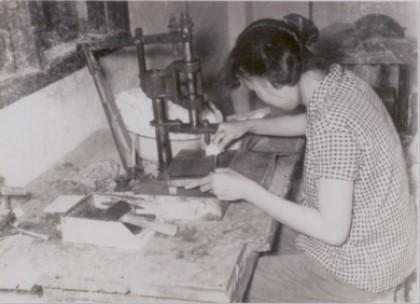
Automatic label printing machine developed by Chenggong Table Tennis Factory
In 1968, with the support and coordination of the local government, Chenggong Table Tennis Factory merged with Huada Badminton Factory③ and Zhendong Sports Goods Factory④ , significantly improving the productivity of the enterprise. Subsequently in 1969, the factory was renamed Guangzhou Sporting Goods Factory, marking the expansion of its product categories and business scope.
③According to the "Chronicles of Guangzhou City", the production of badminton in Guangzhou began in the early 1950s. With the rise of badminton, the production households continued to develop and gradually organized themselves. In 1956, the Yongjian Badminton Production Cooperative and the Yufeng Production Cooperative were formed. In 1960, the Yongjian Society was renamed the Huada Badminton Factory, with 100 employees. In 1964, the World Games brand badminton of the Yufeng Society was rated as a famous brand product in Guangzhou. During the "Cultural Revolution", all badminton production cooperatives were merged into the Chenggong Table Tennis Factory.
④Zhendong Sports Goods Factory mainly produced wooden-handled skipping ropes, table tennis nets, and volleyball nets. Before the merger, the two factories were located on the streets in the urban area, with scattered and narrow factory buildings (all old residential buildings), making material transportation and management extremely inconvenient. The merger improved the production conditions of such products. This article is compiled based on the oral narration of the retired leaders of Guangzhou Table Tennis Factory.
In 1972, the company was renamed Guangzhou Table Tennis Factory. In the same year, Guangzhou Table Tennis Factory introduced the innovative wax expansion method, replacing the old steaming process for producing close-seam balls, which doubled the work efficiency. The introduction of this technology not only improved production efficiency, but also made Guangzhou Table Tennis Factory the first company in China to achieve full mechanization of close-seam ball production.
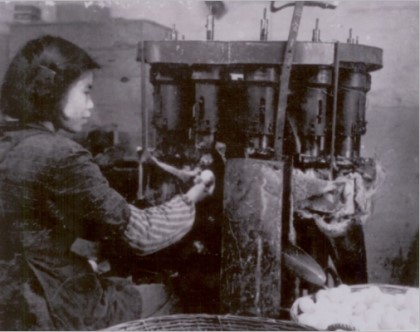
Table tennis ball expander from the mid-1970s
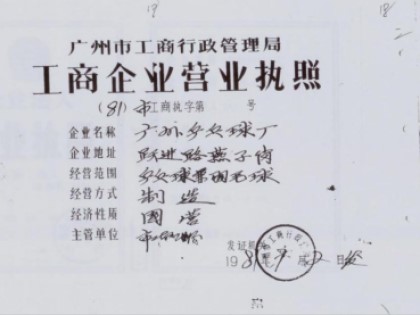
Guangzhou Table Tennis Factory Business License
In 1974, after five months of unremitting efforts and more than 130 precision tests, the Guangzhou Table Tennis Factory successfully developed China's first hard table tennis ball. This achievement marked a major breakthrough in China's table tennis manufacturing technology. The product was subsequently named "Shuangyu Brand". In 1979, this table tennis ball was officially approved by the International Table Tennis Federation and became the designated ball for international official competitions.
In 1980, "Double Fish" brand table tennis balls were officially rated as a national famous trademark and won the National Gold Award in the same year.
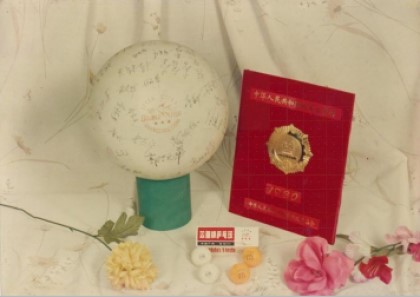
Doublefish table tennis won the national gold medal certificate
In 1981, with the booming domestic and foreign markets for badminton, the Guangzhou Table Tennis Factory restarted the production of badminton with the formal approval of the competent authorities. It focused on creating special balls for high- and mid-end competitions, strictly selected high-quality white goose feathers, and used imported cork and artificial leather as ball head materials to produce badminton with excellent whiteness, strong flight stability, and precise landing points. All products were sold to the Japanese market.
From 1986 to 1990, the annual output of badminton achieved an average high growth rate of 31%. In 1989, advanced Japanese production equipment was introduced, which greatly improved the production capacity and reached an annual production capacity of 24 million. In 1987, the Jinque brand badminton in the domestic market was rated as a high-quality product by the Ministry of Light Industry, and in 1990 it won the official certification of the national competition ball, marking the full recognition of product quality and technical level.
In 1986, as sales continued to expand, Guangzhou Table Tennis Factory set up branch factories in Zengcheng and Huaxian (now Huadu District, Guangzhou), focusing on producing mass-market table tennis balls to meet domestic market demand, while the main factory was committed to producing mid- and high-end table tennis balls for export. In 1987, total production soared to 63.02 million, of which 54.82 million were sold to overseas markets, generating US$2.18 million in foreign exchange revenue.
In 1988, the outstanding performance of Guangzhou Table Tennis Factory won the honorary titles of Provincial Advanced Enterprise and National Second-Class Enterprise. In 1990, Guangzhou Table Tennis Factory invested 2.5 million yuan in factory construction and technical transformation to further improve production capacity. In November of the same year, a new celluloid sheet plant was established in Zengcheng with an investment of nearly 2.57 million yuan. Through this series of transformation and expansion, the annual production capacity of table tennis balls doubled from 60 million to 120 million, making Guangzhou Table Tennis Factory one of the important bases for table tennis ball production in the world.
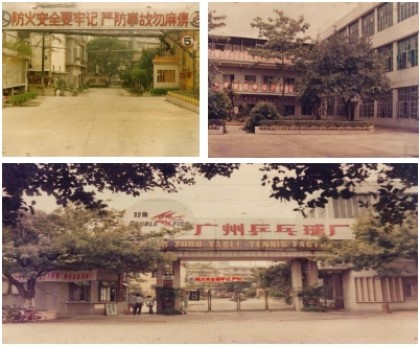
Guangzhou Table Tennis Factory in the 1990s
In 1994, the company relocated and expanded again⑤, requisitioned 50 mu of production land in Dabu Management District, Mayong Town, Dongguan City, relocated and renovated it, expanded its production scale, and achieved rapid improvement in production quality, laying a solid foundation for the company's sustainable development.
⑤ เนื่องจากส่วนประกอบหลักของเซลลูลอยด์ซึ่งเป็นวัตถุดิบสำหรับการผลิตเทเบิลเทนนิสคือไนโตรเซลลูโลส วัสดุนี้จึงมีความไวไฟสูงและก่อให้เกิดอุบัติเหตุไฟไหม้ร้ายแรงหลายครั้งในประเทศจีน รวมถึงอุบัติเหตุไฟไหม้ที่โรงงาน Double Happiness Table Tennis ในเซี่ยงไฮ้และเทียนจิน โรงงานเทเบิลเทนนิส เมื่อวันที่ 14 ตุลาคม 1993 โรงงานเทเบิลเทนนิสกว่างโจวก็ประสบเหตุเพลิงไหม้ ส่งผลให้อาคารเสียหายถึง 4,000 ตารางเมตร นอกจากนี้ การเติบโตอย่างรวดเร็วของพื้นที่อยู่อาศัยใกล้กับหยานซีกังในช่วงทศวรรษ 1990 ทำให้อันตรายด้านความปลอดภัยในพื้นที่โดดเด่นมากขึ้น ด้วยเหตุนี้ โรงงานปิงปองกวางโจวจึงตัดสินใจย้ายสายการผลิตทั้งหมดและย้ายไปที่ตงกวน เพื่อให้มั่นใจในมาตรฐานความปลอดภัยและประสิทธิภาพการผลิตที่สูงขึ้น
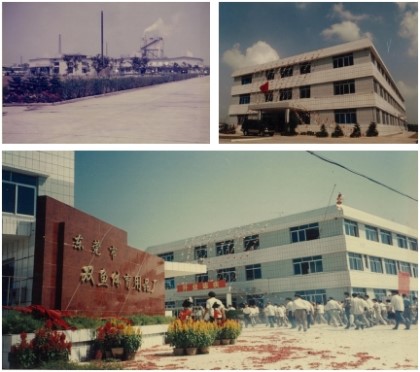
โรงงานตงกวนในปี 1990
ในปี 1995 ตามอิทธิพลที่สำคัญของ แบรนด์ "Doublefish"โรงงานปิงปองกวางโจวได้เปลี่ยนชื่ออย่างเป็นทางการเป็นโรงงานสินค้ากีฬา Doublefish กวางโจว
เมื่อวันที่ 26 กุมภาพันธ์ พ.ศ.2541 โรงงานสินค้ากีฬากว่างโจวซวงหยูถูกรวมเข้ากับบริษัทกวางโจวซวงหยูสปอร์ติงกู๊ดส์กรุ๊ป จำกัด















 Overseas business:(020)8431 9554
Overseas business:(020)8431 9554
 13829778212
13829778212